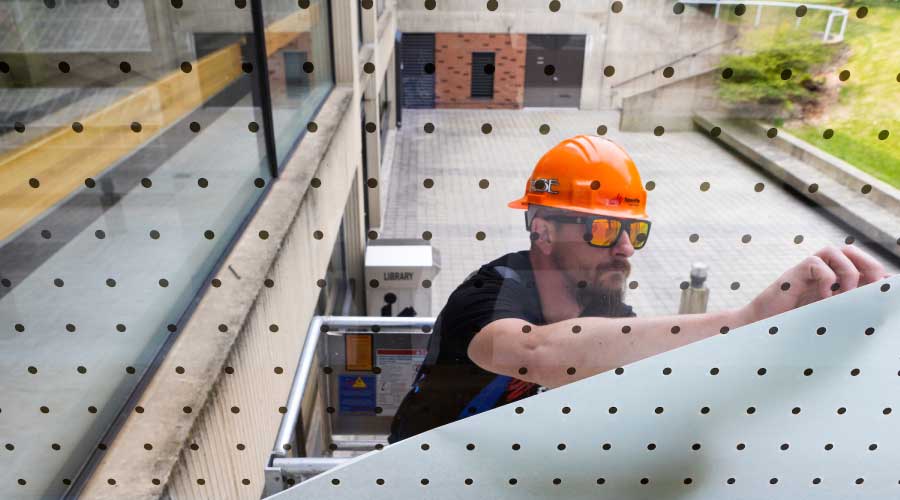Building Envelopes: Inspection Requirements for EIFS
Building-envelope maintenance is not a once-and-forget task. It is an ongoing effort that is never finished.
Consider the conditions under which the building envelope must perform. Daily temperature changes cause thermal movement in building materials. Freeze-thaw cycles cause stresses to accumulate in building materials. Exposure of some building materials to moisture results in corrosion and decay.
Even the routine use of the facility results in wear to building envelope components. Implemented properly, a comprehensive inspection program can help managers minimize envelope failures.
Start with the building's roof. Roofs are the source of most building leaks. Thanks to the combination of ultraviolet light, temperature extremes, moisture, and foot traffic, roofs are under constant attack. So managers should schedule inspections for all roofs at least twice each year for defects — once in the spring after the weather extremes of winter have ended, and once in the fall after the temperature extremes of the summer are over.
Managers should schedule additional inspections immediately following extreme weather, such as rain storms or high winds. Inspectors need to follow the recommendations of the roof manufacturer as to the things they should look for as they make their rounds.
Exterior walls are often thought of as natural barriers to water and air infiltration. And while many of the materials used in wall construction do resist infiltration, few are impervious. Even when these materials are in good condition and show no cracks or other defects, the potential exists for water to penetrate through the material and into the building.
Equally important, exterior walls contain many penetrations that result in potential avenues for both water and air. Windows, doors, expansion joints, control joints, and electrical conduit all represent openings in the exterior walls that, unless properly maintained, will allow both air and water to gain access to interior portions of the building.
At least annually, inspectors should check exterior walls for defects. For masonry walls, they need to check for spalling, cracking, movement, failed joints, and efflorescence — all of which are potential entry points for damaging moisture.
Buildings finished with exterior insulation finish systems (EIFS) have similar inspection requirements. EIFS is a durable material that is widely used today.
While EIFS is low maintenance, it does require some maintenance. Water that penetrates the surface of the material can cause major damage to the wall's structure that may remain hidden for years, resulting in the need for costly repairs. In most cases, water penetration comes from failed joints between EIFS material and wall penetrations, such as windows and doors.
To limit damage, inspectors should check EIFS walls at least twice each year, paying particular attention to joints between the EIFS material and adjacent materials.
EIFS is not the only envelope material with which joints between dissimilar materials is a concern. In most exterior wall construction, these joints are filled with a sealant. If the wrong type of sealant was installed or if it has lost its elasticity due to exposure, it can easily form cracks, splits, or tears.
Again, to limit damage, inspectors should closely inspect all joints filled with sealants at least once each year. The best time to inspect is when temperatures are cool and joints are at their widest, making failed sealant easier to detect.
Unstable fill material in floors and foundations can cause settlement and cracks, which can allow water to enter the building. Improper roof drainage and poorly graded grounds surrounding the building can make the problem worse.
Related Topics:











